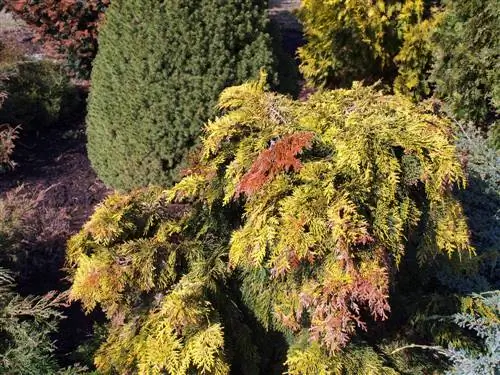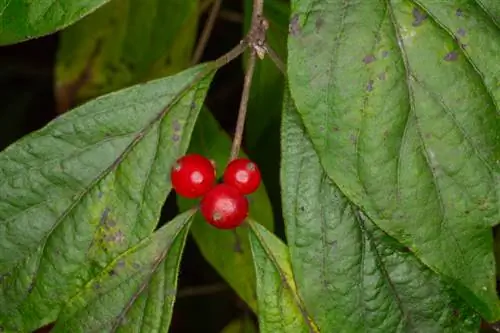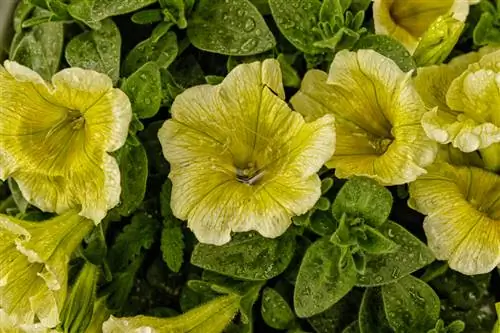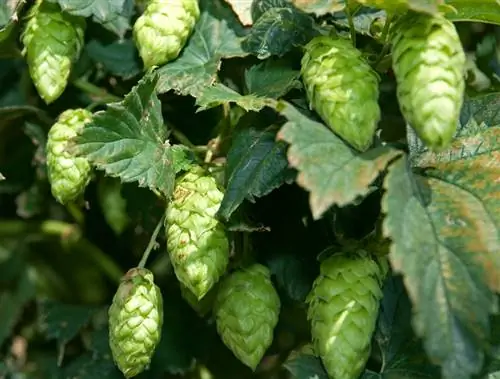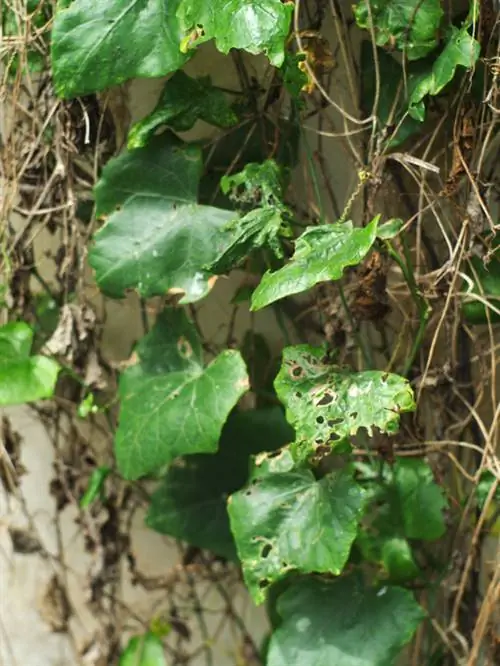- Author admin [email protected].
- Public 2023-12-16 16:46.
- Last modified 2025-01-23 11:21.
Despite its robust properties, juniper is occasionally attacked by diseases. They are caused by various fungi and can be easily combated if detected early.

What diseases can affect junipers and how can they be combated?
Juniper can be affected by diseases such as shoot dieback, juniper blister rust, pear rust and hawthorn rust. To combat this, affected plant parts should be removed and disposed of. Horsetail decoction and potassium-based fertilization can be used as a preventive measure.
Common diseases:
- Instinct death
- Juniper bubble rust included
- Pear grid and
- Hawthorn grating
Instinct death
The fungus Phomopsis juniperivora is responsible for this disease. The spores colonize needles of young plants. These initially turn brown and later yellow-brown to gray. The needles remain intact and do not fall off. After just a few days, black fruiting bodies can be seen on the dying needles and soft shoots. Shoot dieback can often be seen in the Virginian juniper. Affected plant parts should be generously removed and disposed of.
Juniper bubble rust
There are two types of rust fungi behind this disease that colonize different types of juniper. Rust fungi are characterized by a change of host. Different types of trees are required for successful propagation. The fight against these fungal diseases is the same for both species.
Pear grid
The disease is caused by the rust fungus Gymnosporangium sabinae, which occurs on junipers in spring. It manifests itself as thickenings on the woody shoots. Under moist conditions, the spore beds swell into gelatinous bubbles. They develop tiny spores that are transferred to the leaves of pear trees in windy weather.
Pear grid prefers to attack:
- Juniperus sqamosa
- Juniperus chinensis
- Juniperus media
Hawthorn grating
This fungal disease is caused by the species Gymnosporangium clavariiforme. The spores settle preferentially on hawthorn between April and September. In spring there is a change of host. The fungus colonizes the shoots of Juniperus communis and develops tongue-shaped spore deposits that glow orange. In damp weather they swell and have a gelatinous consistency. Under dry conditions, the spore beds lose water and shrink.
Control and prevention
Most of the time you can do without control because the majority of all affected ornamental trees survive an infestation by rust fungi well. Affected branches are cut out so that the fungus cannot multiply any further. If the infestation spreads from the shoots to the leaves or there are roses nearby, you should use control products.
Regular spraying with horsetail decoction has proven to be a preventive measure. The extract is sprayed as soon as the leaves emerge. Potassium-based fertilization can also be used preventatively.

